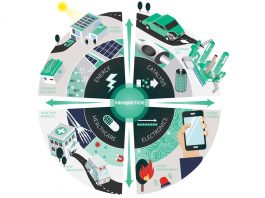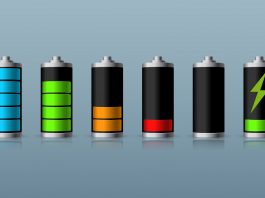An international team of scientists suggest that diamonds could conduct electricity when they are deformed to nanoscale needles.
Using computer simulations, the team, led by Nanyang Technological University, Singapore, the Massachusetts Institute of Technology (MIT), USA, and Skolkovo Institute of Science and Technology (Skoltech), Russia, has shown as an early proof-of-concept that mechanical strain applied to nanoscale diamond needles could reversibly alter their geometry and hence their electrical properties, giving them the ability to conduct electricity at room temperature and pressure.
As published in the journal Proceedings of the National Academy of Sciences of the United States of America, this research could lead to future applications in power electronics used in a wide variety of machines from electric vehicles to smart grids. The nanoscale diamond needles could also result in the development of highly efficient light emitting diodes (LEDs), optical devices, and quantum sensors.
President of Nanyang Technological University, Professor Subra Suresh, said: “The ability to engineer and design electrical conductivity in diamond without changing its chemical composition and stability offers unprecedented flexibility to custom-design its functions.
“The methods demonstrated in this work could be applied to a broad range of other semi-conductor materials of technological interest in mechanical, microelectronics, biomedical, energy and photonics applications, through strain engineering.”
Exploiting the characteristics of diamonds
Diamonds are good electrical insulators due to its ultrawide bandgap of 5.6 electron volts (eV). This means that a large amount of energy is needed to excite the electrons in the material before they can act as carriers in an electric current.
Using computer simulations that involved quantum mechanics, analyses of mechanical deformation, and machine learning, the scientists found that they can narrow this bandgap by elastically deforming the diamond nanoneedle, by bending it as a diamond probe pushed it from the side.
They showed that as the amount of strain on the diamond nanoneedle increased, its predicted bandgap narrowed – an indicator that the team increased the material’s ability to conduct electricity. The bandgap completely disappeared near the maximum amount of strain the needle could withstand before it would fracture. They further showed that such metallisation of diamond at the nanoscale could be achieved without triggering phonon instability or phase transformation from diamond to graphite.
The researchers then used the simulation results to train machine learning algorithms to identify general conditions for achieving optimal electrical conductivity of nanoscale diamond in various geometrical configurations. This scientific research shows opportunities for further development of potential devices with unprecedented properties and performance.
Co-author and MIT Professor Ju Li said: “We found that it’s possible to reduce the bandgap from 5.6 eV all the way to zero. The point of this is that if you can change continuously from 5.6 to zero eV, then you cover all the range of bandgaps. Through strain engineering, you can make diamond have the bandgap of silicon, which is most widely used as a semi-conductor, or gallium nitride, which is used for LEDs. You can even have it become an infrared detector or detect a whole range of light all the way from the infrared to the ultraviolet part of the spectrum.”









